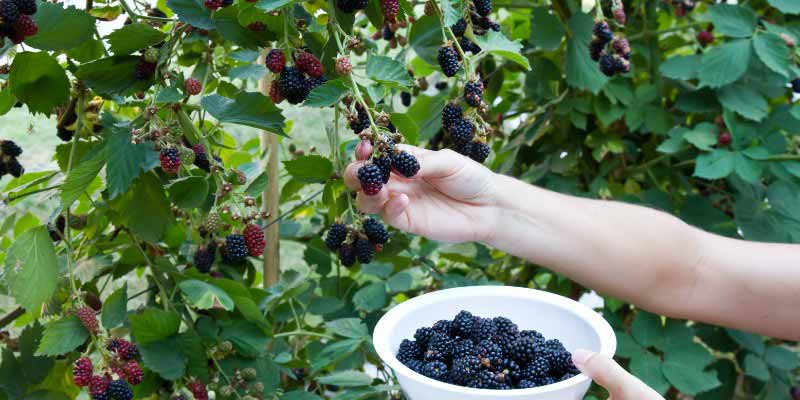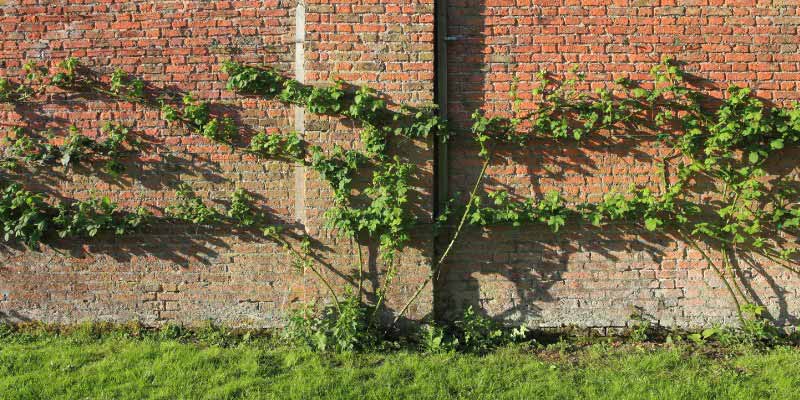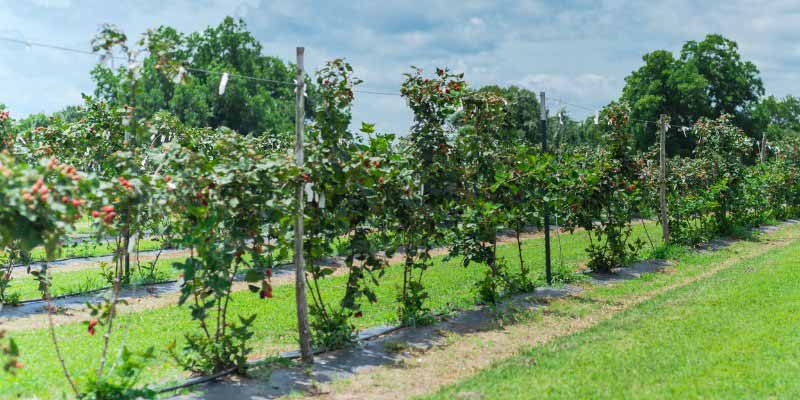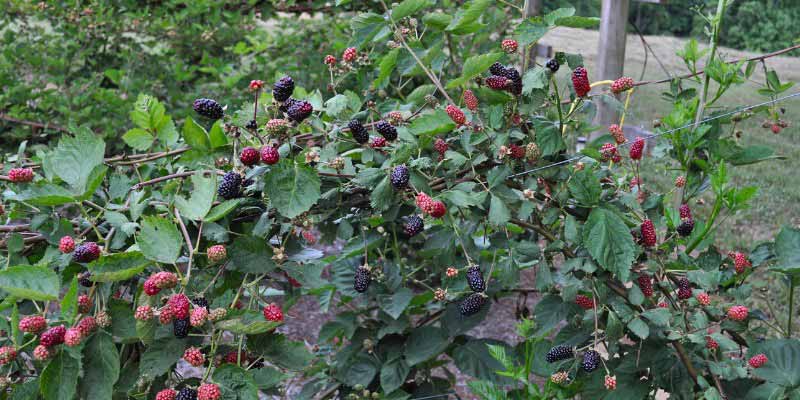Particularly appreciated for its black, sweet and tangy fruits, which appear in late summer, blackberry or bramble is a very common suckering bush in the wild. There are also many cultivated varieties that stand out for their lack of thorns, excellent yield or the flavour quality of their fruit. Forming a very vigorous, dense bush, with suckering, disorderly branches, when grown in the garden the bramble benefits from being trained by guiding its stems onto a support. This helps control growth, makes harvest and maintenance easier, and gives a neater, more attractive appearance. We explain in detail how to train it effectively to optimise its cultivation and enjoy a great blackberry harvest!
For more information, consult our complete guide to growing blackberries.
Why train blackberries?
Training offers the following advantages:
- Optimise space : blackberries can become invasive if not controlled. Training helps organise them and make better use of available space in your garden. Trained bushes therefore take up less room.
- Improve production : by guiding stems in a structured way, each branch receives more light and air, which promotes better fruiting.
- Make maintenance easier : training simplifies pruning and stem maintenance, also making it easier to apply natural treatments against diseases.
- Simplify harvesting : with stems well tied to supports, fruit is more visible and easier to pick without rummaging through a jungle of prickly branches.
- Enhance the garden : a trained bramble looks much more decorative than if it grew in a disorderly, spreading way on the ground

Required equipment
Before you start, make sure you have all the equipment needed for successful training:
- Stakes or a trellis : you can use wooden or metal posts as long as they are sturdy enough to support the weight of mature blackberries.
- Cord or flexible ties : to tie stems without damaging them. Use string or raffia, for example.
- Gardening gloves if you grow thorny blackberries, to protect your hands from scratches.
- Pruning shear to cut dead or damaged stems before tying them.
How to train blackberries
Install the support
If your blackberry is planted against a wall, you can simply fix a trellis to it for the plant to climb on, or fit horizontal cables attached with hooks into the wall.

If the blackberry is planted in the garden, not leaning against a wall, install posts in wood or metal to create a support for it to grow on. Use two sturdy posts (or more depending on number of blackberry plants), spaced 2 to 3 metres apart. Between these posts, stretch several horizontal wires at different heights (about 50 cm, 1 m and 1.5 m).

Select stems to train
Blackberry produces long, flexible stems each year, but not all should be trained. First identify main stems and remove those that are too weak or damaged.
- Spot the most vigorous shoots, those well developed and healthy. These will carry most of the fruit the following year.
- Use pruning shear to remove any broken, diseased or dead stems. This will allow the plant to concentrate its energy on productive branches.
Tie the stems
Once you have selected the stems to keep, it is time to tie them to the support. Tie the main stems on each side of the horizontal wires using string. The idea is to space stems apart to maximise exposure to sun and air. Tie stems every 30 to 40 cm, but leave some slack so they can continue to thicken.

How to maintain a trained blackberry
After training, monitor and regularly adjust stems as the blackberry grows:
- Each winter, prune stems that have fruited. Blackberries bear fruit on canes from the previous year. In winter, remove canes that carried fruit this year to make way for new shoots.
- In spring, when new stems appear, guide and tie them correctly so the plant stays well ordered.
































Comments